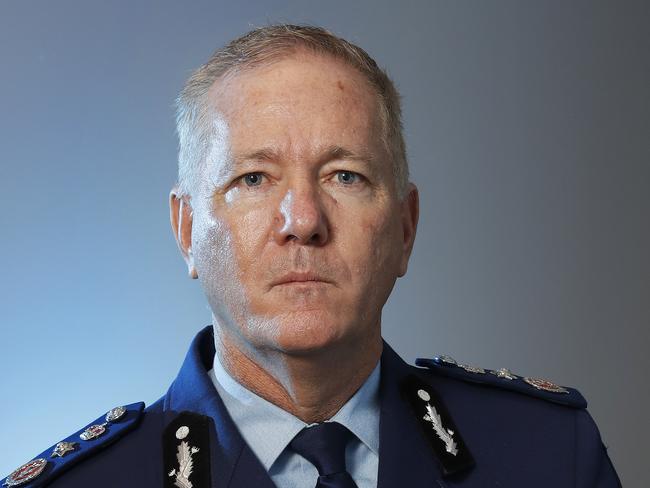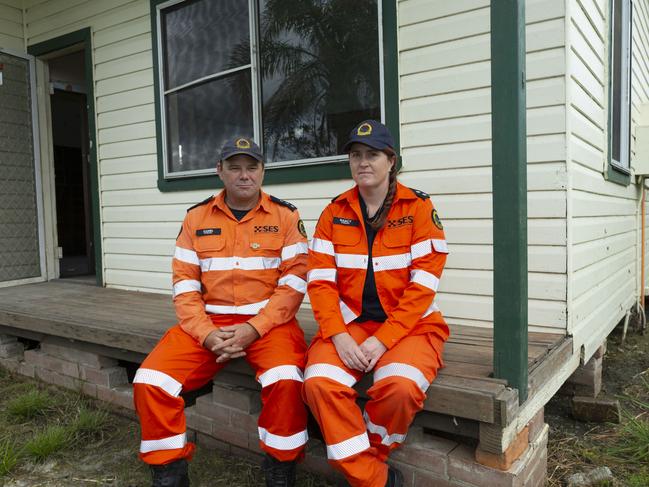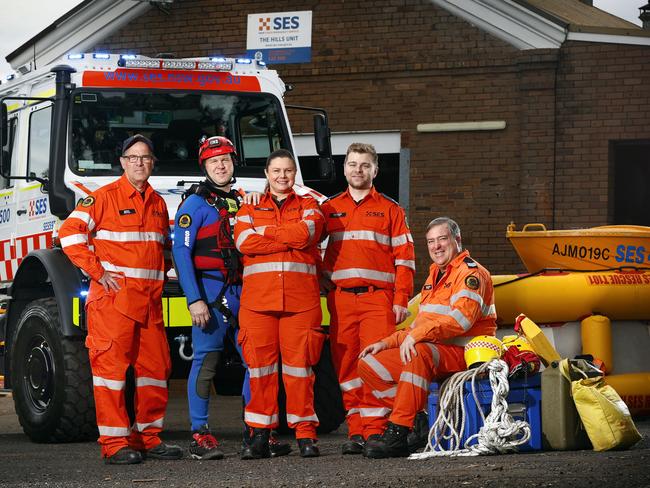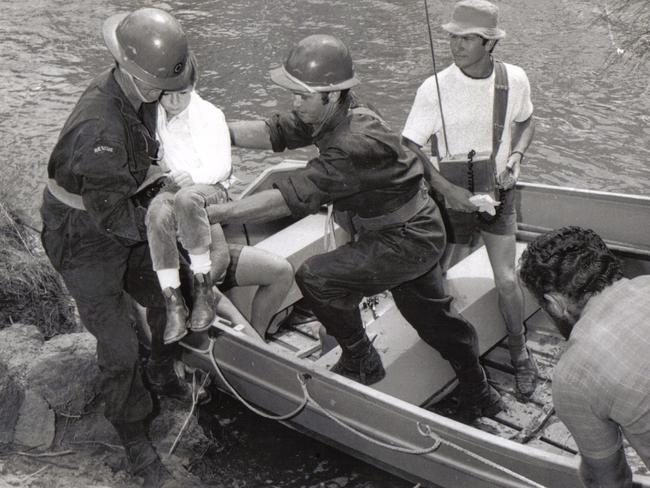Small town SES unit desperate for volunteers after busiest year in history
A volunteer who worked 48 days straight has labelled criticism from Mick Fuller a “slap in the face” after the SES recorded its busiest ever year.
NSW
Don't miss out on the headlines from NSW. Followed categories will be added to My News.
AN SES volunteer who worked 48 days straight during the Northern Rivers floods is infuriated after report author Mick Fuller labelled the SES a “part-time organisation”.
The former NSW Police chief told ABC North Coast the volunteers deserved praise, but could not respond well enough to flood disasters.
“The agency has around 330 full-time employees but only thirty of those are of operational reasons … but there really is a small part-time agency and they do such wonderful work in small storm events and we’ve all seen them tarp up houses and cut trees but clearly in these large disasters the SES on their own at the moment are not a big enough combat agency,” Mr Fuller said.
Mr Fuller has said it would take up to 20 years for the SES to reach the level of capability of the RFS or Fire and Rescue, but volunteers say the answer is more volunteers and more funding.

Ashley Slaps, commander at the SES Woodburn Unit in the Northern Rivers said he was frustrated by Mr Fuller’s comments after working around the clock to save his community.
“It’s ridiculous, the members spoke to the commission about their workload and how much work they did do … for them to come back and say we are part-time and only good for roofs; we did extremely well,” Mr Slaps said.
“The work that everyone did was so long term without any question of what was happening to their own houses at the time they kept going and going and not only have they not been recognised for it, but they are being criticised for the work they did do,” he said.
“The frustration is that the recognition, not that we do it for that, but everyone should be getting patted on the back – not slapped in the face.
SES RECORDS BUSIEST EVER YEAR
While her home was being swallowed by raging floodwaters, Nancy Grimm was trying to decide who she could save with just two rescue boats.
Ms Grimm and her partner Daniel Clark are State Emergency Services volunteers at the northern NSW town of Coraki and said what has been the busiest year in the service’s 67-year history has revealed a desperate need for more boots on the ground.
“Having to take a phone call from someone who’s telling you they think they might die overnight, freezing on their roof and you’re going: ‘We can‘t safely get a boat to you and the helicopters don’t fly until morning’ … you’re feeling that you almost condemned them to death,” Ms Grimm said.
“We only had two boats in that first flood because we thought that‘s all we would ever need, no one explained to us what sort of isolation hazard we lived in,” Mr Clark said.
“It reached a point where (the Richmond river) jumped a metre in an hour and the panic and the fear set in, in the community … I was in the boat for two days and I saved 120 people.
“I‘m thinking: ‘What is going on, this is the apocalypse’.”

More than 64,000 requests for SES assistance were made in the 12 months to June 30 and the SES undertook 2645 flood rescues and completed more than 38,000 storm-related jobs across the state.
In Coraki, Ms Grimm and Mr Clark said the wide-ranging weather warnings from the Bureau of Meteorology and a lack of communication about the threat to life made the February flood “chaotic”.

“What made us fall down is we just didn’t have enough volunteers from the local community, we needed three more boat operators at least. There’s just 12 people in our unit,” Mr Clark said.
The pair were left without electricity, effective communications or support from other units in the first flood when the river became so dangerous even the skilled volunteers feared for their lives.
“When he went out on that first job on the river I didn’t think he was coming back,” Ms Grimm said.
As the state government starts the process of merging RFS and SES systems in response to the damning report into those devastating floods, the volunteers say more needs to be done to encourage those with local knowledge to give up their time.

The independent flood inquiry had 218 recommendations, which the state government has pledged to adopt. One of the key ones was to provide greater training and support for the SES. But the volunteers say that only goes so far.
“The most annoying thing about the flood report is they are hammering the (people at the) top but we need more volunteers, we need people to put the boots on that the money buys, we need the people to drive the boats,” Ms Grimm said.
“I had an idea that maybe they could match your volunteer hours to a tax break as a little thankyou – it always makes us giggle at our (council) rates when we see this includes a levy for the SES but we volunteer for them,” Ms Grimm said.

Getting more boots on the ground will be crucial this year as there are predictions another La Nina wet weather event is likely on its way next summer, bringing with it potentially more floods.
The SES’s more than 9000 volunteers worked 412,000 hours of service in the last 12 months, SES Commissioner Carlene York said.
“Our volunteers worked around the clock doorknocking and warning communities of pending risks and taking part in rescue and evacuation operations,” Commissioner Carlene York said.
“NSW SES members have faced extreme challenges. Our people were exhausted and yet they kept showing up day in, day out.”

No one knows this more than the volunteers at The Hills SES unit, who were stretched to the absolute limit responding to flooding in the Hawkesbury.
With 35 years experience in the SES, volunteer Malcolm Liston said shorter courses could be the answer to encouraging more people to sign up. He said many potential recruits were turned off by the time commitment.
“It’s about trying to get more people motivated by also looking at the training … we’ve been shortening our courses so you can do a job-ready course then go straight to a boat operator,” Mr Liston said.
to join up: https://www.ses.nsw.gov.au/get-involved/volunteer/




